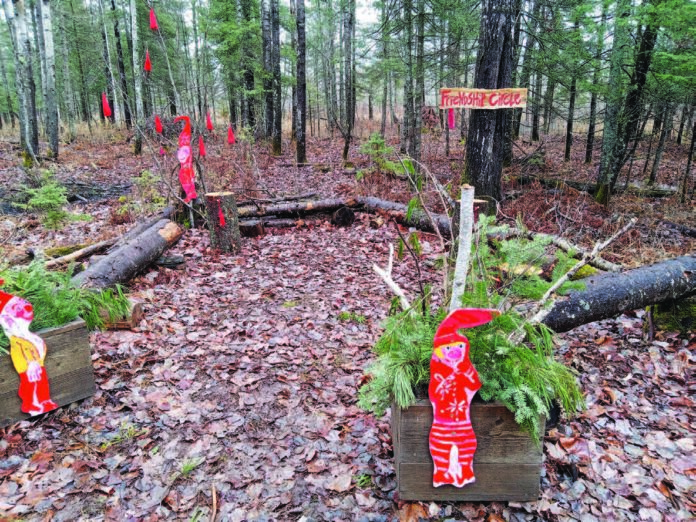Visitors to Knife River must be careful, or they’ll run into a troll. Norwegian-born Minnesota author Lise Lunge-Larsen’s newest characters, Emily and Scout, learn just that when they move to Knife River. Children and families can read Emily and Scout’s story at self-guided storyboard stops as they take a ½ mile trail into the woods along Knife River, where the Huldrefolk dwell. Along the way, there are characters to meet, activities to do, tricky obstacles to traverse, and life-treasure ingredients to collect, which will form a potion to calm the Knife River Troll. Be sure to check out the treasure at the end of the trail after you scare away the troll!
Trolls are important characters in Scandinavian folklore. They’re often depicted in early tales as giant, monstrous beings with magical powers. Traditionally, they were hostile to people and lived in castles, haunting the surrounding area after nightfall. But trolls had a weakness – sunlight. When exposed to the sun, they would either explode or turn to stone, depending on the tale. In later stories, trolls were more often human-sized, or similar sized to dwarves and elves. Norwegian dramatist Henrik Ibsen featured trolls in his plays Peer Gynt and The Master Builder as symbols of destruction.
In Norwegian mythology, there are two varieties of trolls: the mountain or forest troll, and the cave troll. The mountain troll is the variety that tries to eat Bilbo and the Dwarves in The Hobbit. They use their connection to nature to uproot trees and cause avalanches. This is also the variety of troll that tends to ask riddles before allowing you to cross their bridge.
Cave trolls in mythology lived completely underground and resembled the trolls of Disney’s Frozen. However, in Norse mythology, they weren’t quite as friendly as Frozen’s trolls, instead using their connection to nature to trick humans. Many folk tales, including some that author Lise Lunge-Larsen has retold, tell of ways to trick trolls. Besides their adverse reaction to sunlight, trolls are repelled by lightning and church bells.
So, with that knowledge of trolls in mind, you and your family can safely travel the Huldrefolk Trail in Knife River, beginning at the East Shilhon trailhead parking lot. The story trail is sponsored by the Knife River Recreation Center. The driftwood sculptures were created by Wilmer Roballo, and the characters were painted by Laura Stone, Kaia Anderson, and Patricia Canelake.
If you need more ideas on how to trick trolls, you can read more in Lunge-Larsen’s book Seven Ways to Trick a Troll. Lunge-Larsen has seven other books in the Arrowhead Library and Duluth Library systems. Christmas vacation is upon us, and it’s time to enjoy Jolabokaflod after a hike along the Huldrefolk Trail.



